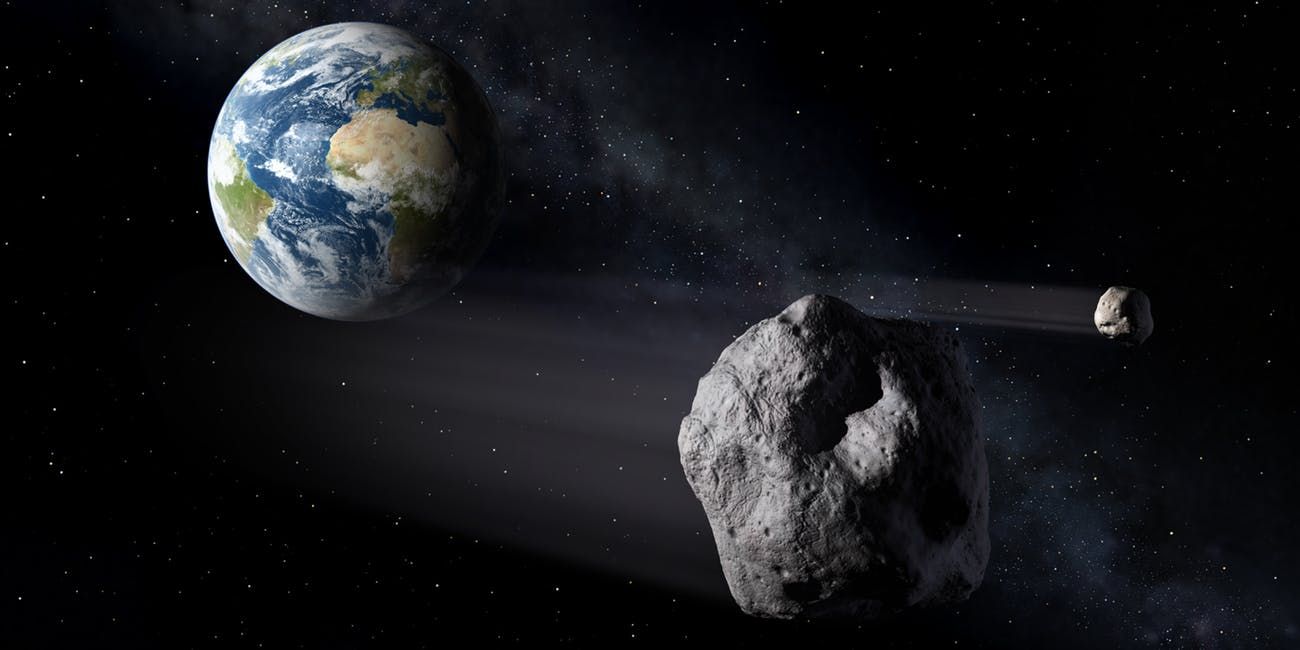Near-Earth Objects Could Be Used by Extraterrestrials ‘To Watch Our World,’ Stunning Study Suggests
Article by Chris Ciaccia September 30, 2019 (foxnews.com)
• Although Earth only has one moon, it does have other miniature natural satellites locked its orbit, known as “co-orbital objects.”
• According to a new study entitled: “Looking for Lurkers: Co-orbiters as SETI Observables”, recently published in the American Astronomical Society’s The Astronomical Journal, these space rocks could be hiding grounds for an advanced extraterrestrial civilization, given their small size and close proximity to the planet. The study notes, “These near-Earth objects provide an ideal way to watch our world from a secure natural object… that provides resources an ETI [extraterrestrial intelligence] might need: materials, a firm anchor, and concealment.”
• The study’s sole author, James Benford, says that there could be hundreds, or even thousands, of stars that have been close enough to the Earth throughout its history for a potential intelligent civilization to make contact. Such a civilization may have seen on the Earth single-celled organisms or possibly dinosaurs, depending upon when they viewed them. Benford adds that there’s a chance that the technology they used to keep tabs on Earth could still be there. “This is essentially extraterrestrial archaeology I’m talking about.”
• Paul Davies, a physicist and astrobiologist at Arizona State University who was not involved in the study, said that aside from looking for extraterrestrial technology, studying co-orbitals might yield some promising finds. Says Davis, “[I]f it costs very little to go take a look, why not? Even if we don’t find E.T., we might find something of interest.”
• China has plans to explore the “constant companion of Earth” asteroid 2016 HO3.
Although Earth only has one moon, it does have other natural satellites, including asteroid 2016 HO3, known as a “co-orbital object.” These tiny celestial objects could be an “attractive location for extraterrestrial intelligence,” according to a new study.

The research suggests that these space rocks could be hiding grounds for an advanced civilization, given their small size and close proximity to the planet.
“These near-Earth objects provide an ideal way to watch our world from a secure natural object,” the study’s abstract reads. “That provides resources an ETI [extraterrestrial intelligence] might need: materials, a firm anchor, and concealment. These have been little studied by astronomy and not at all by the Search for Extraterrestrial Intelligence (SETI) or planetary radar observations.”
The study’s sole author, James Benford, told Live Science that it’s possible that there could be hundreds, or even thousands, of stars that have been close enough to the Earth throughout its history for a potential intelligent civilization to make contact.
FAIR USE NOTICE: This page contains copyrighted material the use of which has not been specifically authorized by the copyright owner. ExoNews.org distributes this material for the purpose of news reporting, educational research, comment and criticism, constituting Fair Use under 17 U.S.C § 107. Please contact the Editor at ExoNews with any copyright issue.


